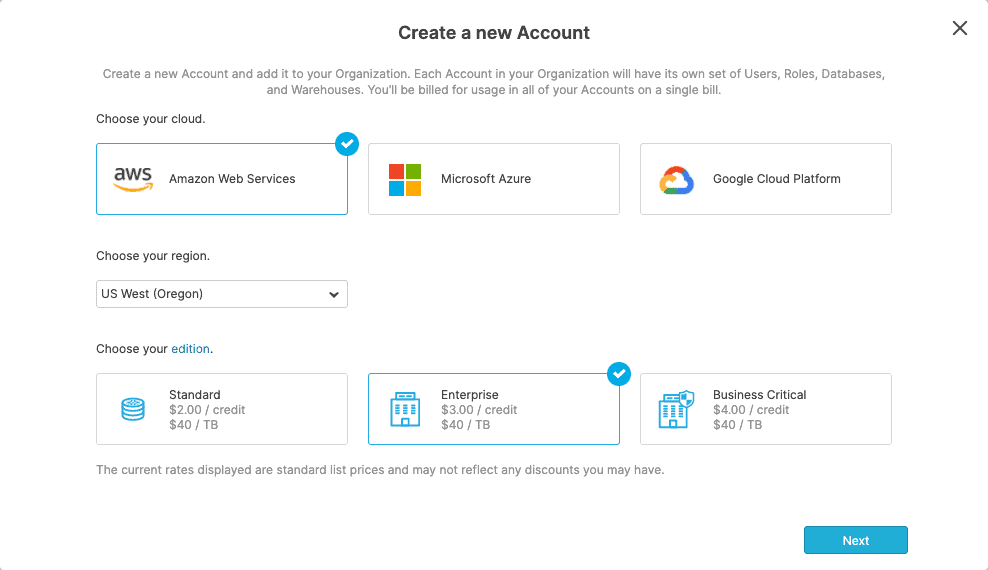Managing Multiple Accounts with Snowflake Organizations Is Now in Public Preview

We are excited to announce that the new Snowflake Organizations feature is now available in public preview. Organizations enable customers to easily manage their data, storage, and compute across multiple Snowflake accounts and even across regions and clouds.
Through a new ORGADMIN role, customers can now:
- Create new accounts in any region or cloud in seconds
- Gain a consolidated view of all accounts, regardless of cloud or region
- Monitor usage and spend from all accounts in a single place
- Visualize total usage in SnowSight or partner tools like Tableau, PowerBI, and Thoughtspot
- New, simpler customer-controlled URLs for accessing all accounts
We’re excited to hear how you use these new more powerful self-service capabilities to manage your Snowflake Data Cloud.
Companies like EA, Cisco, and Expedia have already been using the Organizations feature, which has allowed them to review aggregate costs across all their accounts. Companies like Slalom have used Organizations to quickly create new accounts to support new business objectives. Snowflake Data Marketplace providers Starschema and Demyst were able to easily replicate and manage their data shares in new regions, expanding their reach to new consumers.
Getting Started with Organizations
Starting today, most customers can opt into the Organizations public preview by filing a support ticket. To start using Organizations, you’ll need to choose an organization name that spans all of your accounts and be part of the new URL for accessing Snowflake. (Note that all existing account URLs will continue to function.) You’ll also need to choose which account will have the ORGADMIN role and which users should be granted that role. Once enabled, users using the ORGADMIN role will see a new Organizations tab and have the ability to run Organizations commands.

Using Organizations to Monitor Usage
One of the main benefits of the Organizations feature is the ability to view usage across all of your accounts in a single view. By using the new organization_usage schema, you can access a total rollup of your compute, storage, and data transfer usage across all accounts. You can drill into each account by using the name from the account_name column in each view.
Adding New Accounts to Your Organization
To add new accounts to your organization, click Create New Account on the Organization page. New account URLs include the organization name you chose and are displayed in the following format:
https://<organization_name>-<account_name>.snowflakecomputing.com

How New Organizations Affect Existing Accounts
All existing accounts receive an new additional URL that incorporates the organization name:
https://<organization_name>-<account_name>.snowflakecomputing.com
Note that all existing accounts continue to be accessible under their existing URLs (now called the account locator URL) so this does not affect any of your existing pipelines or integrations.
Renaming Accounts
You can rename accounts that are using the new URL by filing a support ticket.
The new Organizations features are just the beginning. Over the coming months, we’ll continue to add new features to make managing your accounts easier and provide additional transparency into usage and billing. The upcoming features will include more granular organization_usage views and the ability to rename and delete accounts on a self-service basis. Additionally, we will introduce URLs that can be failed over across different accounts in different regions and clouds. In combination with database replication and failover, this will enable you to transparently redirect your client applications to another account for disaster recovery.
With Organizations, you can easily manage and monitor your entire Snowflake footprint.
Join the Public Preview by filing a support ticket. For more information, you can also review the documentation here.
